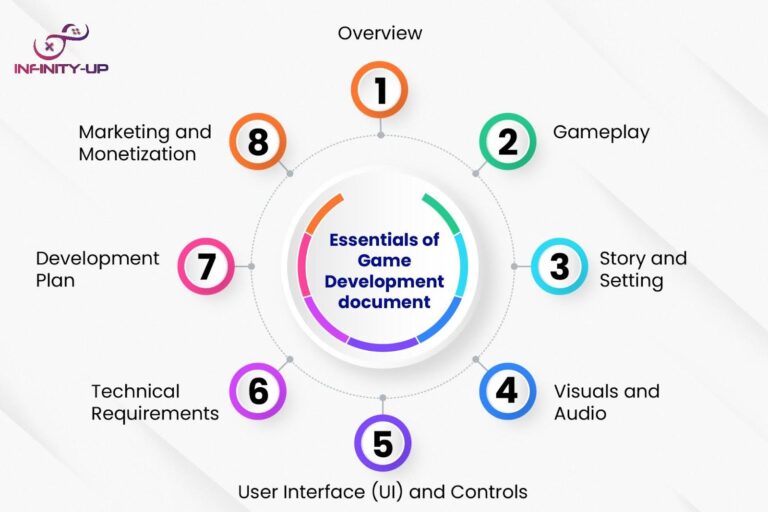Game Design Document
Game Design Document
Introduction
A game design document (GDD) is a foundational blueprint for any game project. Whether you are part of an Indie developer or a major studio, a comprehensive GDD aligns your team, streamlines development, and helps to avoid expensive errors. This guide delays the important elements of a GDD, best structure practices, and tips to ensure its continuous relevance in the development process.

Game Design Document
A Game Design Document is a detailed, living document that outlines every aspect of a game, from mechanics and story to technical requirements and monetization strategies. It serves as a single source of truth for developers, artists, designers, and stakeholders, ensuring everyone is on the same page.
Importance of Game Design Document
Clarity and Vision:
Defines the game’s concept, scope, and direction.
Team Alignment:
Ensures all team members understand their roles and responsibilities.
Efficient Development:
Reduces miscommunication and costly changes.
Attracts Investors and Publishers:
A well-prepared GDD increases your chances of securing funding.
Who Reads the GDD and Why It Matters
The Game Design Document (GDD) isn’t just for game designers—it’s intended for the entire development team, including
- Designers
- Artists
- Programmers
- Sound Designers
- Producers
- QA Testers
- Stakeholders
The GDD provides a clear and detailed overview of the game’s design and Game Development Process, ensuring that all team members understand the game’s vision, mechanics, and objectives. This alignment is crucial for effective decision-making and seamless communication throughout the project. For programmers, the GDD is a valuable reference for structuring development tasks, tracking progress, setting milestones, and efficiently managing resources.
What to Include When Writing a Game Design Document
Incorporating key elements will help make your game design document as thorough and detailed as possible.
Overview:
This section sets the stage. It defines the core game concept, its genre (e.g., RPG, platformer), the target audience (who you’re making it for), and the platforms it will be released on (e.g., PC, consoles). It’s the elevator pitch for your game.
Gameplay:
This details how players interact with the game. It explains the core mechanics (rules, systems like combat), the gameplay loop (repeated actions), player progression (leveling, abilities), and the intended difficulty. This section defines the player experience.
Story and Setting:
This section focuses on the narrative. It describes the game’s story, including plot, characters, and setting. Games with rich worlds include worldbuilding details (history, lore). This section brings the game world to life.
Visuals and Audio:
This section defines the game’s look and sound. It describes the art style (realistic or cartoonish) and the desired sound effects, music, and voice acting. This section sets the game’s atmosphere.
User Interface (UI) and Controls:
This explains how players interact with the game. It details the UI design and the control scheme (keyboard/mouse, controller, touch screen). This section ensures player accessibility.
Technical Requirements:
This section outlines the technical needs. It specifies the game engine (Unity, Unreal), minimum/recommended hardware, and any other required software. This section ensures the game runs smoothly.
Development Plan:
This covers the logistics of making the game. It introduces the development team and their roles, provides a development timeline with milestones, and estimates the budget. This section keeps the project on track.
Marketing and Monetization:
This addresses the business side. It outlines the marketing strategy for promoting the game through Video Games and, if applicable, how the game will be monetized (paid download, free-to-play). This section ensures the game reaches its audience.
By including these elements in your Game Design Document, you will create a comprehensive and valuable resource that will guide your team throughout the game development process.

INFINITY-UP Level Design Documentation Guide
At INFINITY-UP, level design is at the core of creating engaging and captivating gameplay experiences. Our approach ensures well-balanced gameplay, seamless difficulty progression, and optimized environments across various game genres. A meticulously crafted level enhances player engagement, guides progression, and maintains an ideal gameplay flow.
To maintain consistency and efficiency in our projects, we follow a structured Level Design Document (LDD) format. This guide outlines the key components essential for designing levels that align with INFINITY-UP’s standards of quality, creativity, and technical precision.
Conclusion
A Game Design Document (GDD) is the blueprint for game development, ensuring clarity, consistency, and alignment across all aspects of design. It helps streamline production, reduce miscommunication, and keep the project on track. A well-structured GDD transforms ideas into reality, guiding the team toward creating a polished and successful game.
Let’s build something amazing together! Get a free quote from INFINITY-UP today.
FAQ
Q1: How detailed should a GDD be?
A: Balance depth with flexibility. Include core mechanics, story, and key features, but avoid over-detailing areas likely to evolve. Focus on what’s critical for the team to execute the vision.
Q2: Should concept art be included?
A: Yes, but sparingly. Use visuals to clarify art style, UI, or key characters, but avoid cluttering the document. Link to external assets if needed.
Q3: How do I keep the GDD updated?
A: Assign ownership (e.g., lead designer) to revise it as the game evolves. Use version control tools (e.g., Google Docs, Confluence) and log changes in a revision history.
Q4: Can a small indie team use a simplified GDD?
A: Yes, indie teams often use a “Lean GDD” with just the essential details. The format can be flexible depending on the team’s needs.

